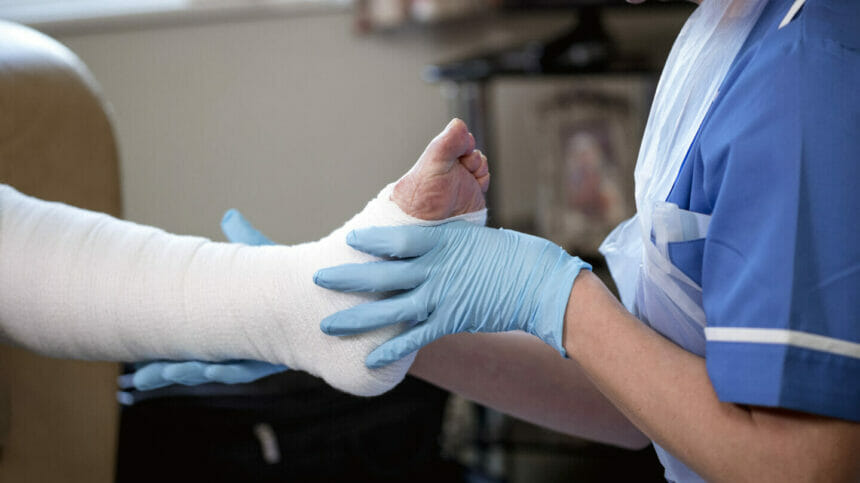Same-day surgery for diabetic foot ulcers speeds healing, cuts amputation risk: study
SEPTEMBER 20, 2022
SHARE ›

When prevention doesn’t work, diabetic foot ulcers are best managed with early intervention for optimal outcomes. In a new study, physician researchers have found that same-day surgical procedures resulted in faster healing and led to fewer amputations.
The procedures involved adjusting the mechanics of the foot to remove the pressure on the ulcerated region and speed healing. The surgeries consisted of either toe tendon release to relax the toe into a straight position, or Achilles tendon lengthening to allow flat-footed walking.
Investigators compared outcomes in 19 patients offered one of the surgeries, to those of 14 patients who were treated more conservatively, with medical and podiatric management. None of the patients had abscesses related to their foot ulcers.
Quickly healing wounds
After one year, ulcers were successfully resolved for all patients in the surgery group with an average time of 3.3 to 4.5 weeks. Only three patients in the usual care group had ulcer resolution, with an average time of 20 weeks to full healing.
In addition, no patients in the surgery group were later admitted for diabetic foot sepsis compared to seven (46%) in the usual care group. And only two patients experienced ulcer recurrence occurred in the surgery group, compared to 10 (66%) in the conservative treatment cohort.
Reduced amputations
The usual care group was more likely to have the limb amputated (7 patients, 66%), whereas two patients in the surgery group had a subsequent amputation. In addition, there were no deaths in the surgery cohort, versus six in the conservative care group, reported lead author Adrian Heald, MD, from the Salford Royal NHS Foundation Trust, Salford, United Kingdom.
“Our study is the first in the U.K. to demonstrate practical and financial feasibility of simple orthopedic interventions to accelerate healing of mechanical forefoot ulcers for patients with diabetic neuropathy,” Heald said. “We urge other diabetic multidisciplinary foot teams to explore this treatment option.”
The study was presented at the European Association for the Study of Diabetes (EASD), held this year between Sept 19 and Sept 24.
Related articles:
SNF-linked wound clinics saw fewer patients during pandemic but unchanged outcomes